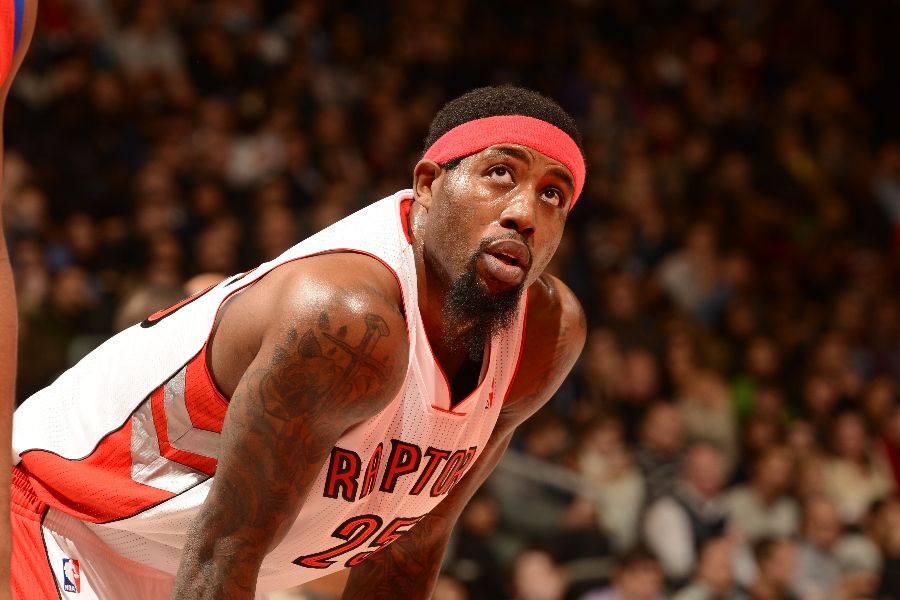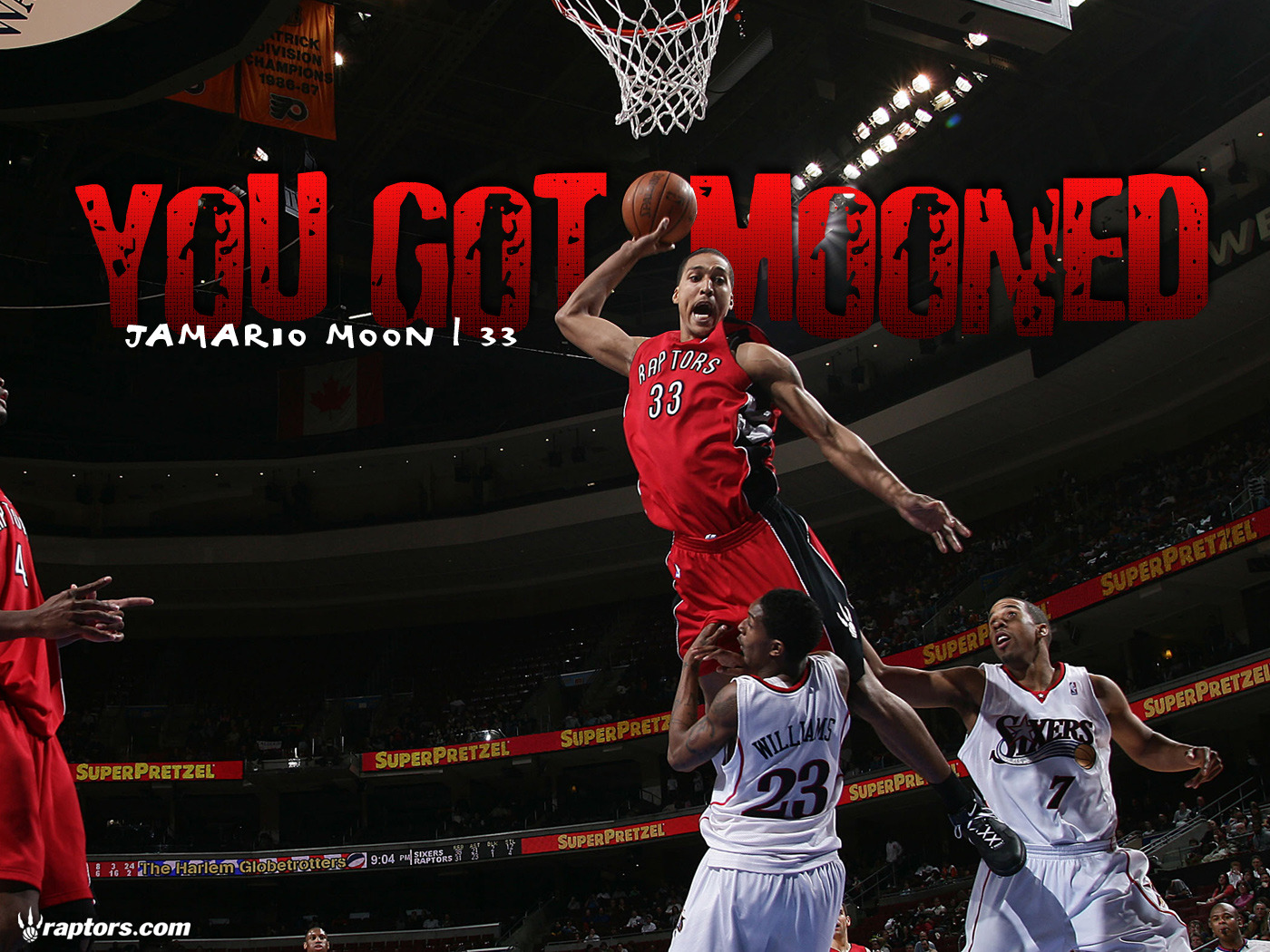Shopping at the thrift shop with a $100 bill.
Over the last eight days, our beloved general manager reeled off an impressive, if not extensive series of moves. We here at RR would like to think that we covered every transaction from every angle (we even wrote 2.5 articles on Nando de Colo), but in case you missed it, here’s a list of everything that’s happened over the last week:
- John Salmons for Lou Williams and Bebe Nogueria
- Kyle Lowry signed 4-years, $48 million
- Patrick Patterson signed 3-years, $18 million
- DeAndre Daniels likely off to Europe
- Nando de Colo signs with CSKA Moscow
- Steve Novak and 2016 2nd round pick traded for Dionte Garrett
- Julyan Stone waived
The flurry of moves leaves the roster at 12, or 13 if Greivis Vasquez re-signs with the Raptors. That figure assumes that both Brazilian rookies will be signed, and that Dwight Buycks and Dionte Garrett are waived. For more on the state of the roster, and the status of their financial situation, check out Blake’s little run-down.
With the 12/13 players in place, the roster has two holes left to fill — Joe Johnson insurance big wing defender and backup center. Let’s address each position separately.
Backup Center
In my opinion, neither need is particularly pressing, especially the back-up center spot. Not only should Jonas play slightly over 30 minutes a game, there are a number of worthy back-ups in Chuck Hayes (everyone’s new favorite whipping man) and Bebe Nogueria. There should only be around 16 minutes per game to mop up for those two, and don’t forget, Amir Johnson can begrudgingly fill in at center if need be.
Also, the need isn’t exactly pressing. Defense wasn’t really an issue for the Raptors, especially not at the rim. The Raptors boasted the 9th best defense overall, 10th best rebounding rate, and the 11th lowest opponent field goal percentage at the rim. There’s room for improvement, but for the most part, that will fall on the shoulder of Jonas to continue developing. Any upgrades made for the 16 minutes per game he’s out will be marginal.
Nevertheless, here are a few worthwhile candidates (in the Raptors’ price range) to consider:
- Chris “Birdman” Andersen
- Emeka Okafor
- Ekpe Udoh
- Nazr Mohammed
- Jason Smith
- Cole Aldrich
Wing Defender
Many of us are over-reacting to the events that transpired in the playoffs — Joe Johnson posting up, then drawing double-teams single-handedly eliminated the Raptors — but there aren’t that many gigantic wings left in the league. And the few that do exist — the LeBron James, Kevin Durant, Carmelo Anthony’s of the world — no one can reasonably guard anyway. At least, not to any appreciable extent without some serious cap room to make a run at the Luol Deng’s or Andre Igoudala’s of the world.
Rather, we forget that for the most part, the two-headed small forward tandem of Terrence Ross and John Salmons managed just fine last season, at least on defense.
Consider Celtics forward Jeff Green, who is listed at 6-foot-9, 235 lbs. In the three games after the Rudy Gay trade (he would count as a large wing defender), Green averaged 11.7 points per game against the Raptors, shooting 36 percent from the field (he averaged 16.9 points on 41.2 percent shooting on the season). Or, the case of Pacers forward Paul George, who averaged 16.3 points per game on 37 percent shooting against the Raptors after Gay left. The problem isn’t as bad as it seems. We’re making too much of boogeymen.
And don’t forget the team is still trying to develop it’s players, and it just so happens that their last two first-round draft picks, those being Terrence Ross and Bruno Caboclo, both play on the wing. Bringing in a stop-gap guy directly takes floor-time away from the youngsters. Development is like an iceberg, where most of the work is unseen, skills honed from hours in the gym. But we fans can only track their improvements with their in-game performance. They need time too.
But of course, the argument can be made that a big wing defender is needed in the playoffs, especially if LeBron James, Carmelo Anthony and Joe Johnson are still in the East when the dust settles on the offseason. If so, here are some names in the Raptors’ price range (affordable using the full mid-level exception)
- Marvin Williams
- Vince Carter
- Wes Johnson
- Xavier Henry
- Ivan Johnson
- P.J. Tucker
- Al-Farouq Aminu
- Richard Jefferson
- Hedo Turkoglu (LOLOLOLOL)
- John Salmons (LOLOLOLOLOLOLOLOL)
Using the Mid-Level to our advantage
Given that the Raptors should be freely able to use the full mid-level exception ($5.3 million), either need can be adequately filled in the meantime. A number of free-agents have already been inked to the mid-level this offseason, including Spencer Hawes and Josh McRoberts.
Ordinarily, players signed to the mid-level are inked to four-year deals starting at the full base amount, with incremental 4.5 percent raises every year. However, given that the Raptors’ don’t have a pressing need at either position, I think the the team would be best off maintaining as much flexibility as possible.
My solution is this: find a worthwhile player, and sign them to a two-year deal worth $11 million. The first year should be the maximum allowable using the mid-level, and the second year should be partially guaranteed, worth 104.5% of the first year’s salary. Basically, the idea is to recreate the what Orlando did with Ben Gordon, only with a better player.
Obviously there are hurdles to this. First, any player agent should be able to see through the facade and understand that it’s effectively a one-year deal. Many middling free-agents crave security, Second, it would put the Raptors close to the luxury tax, which would handcuff their ability to facilitate trades during the season.
But if executed correctly, there are benefits to consider on both sides.
From the player’s perspective, a big one-year payout could be tempting to a player looking to rehab their value around the league (Al-Farouq Aminu) or for veterans on their last stop before calling it quits (Vince Carter).
For the team, it would allow the team to plug a hole with a short-term stop-gap, while maintaining flexibility going forward. It also gives the team a trade asset next offseason, a la John Salmons. Remember, the price for a one-year cash-dump this season was a first-round pick.
And before you start, this would not work with Trevor Ariza, Chandler Parsons or Luol Deng. All three players will get in excess of $9 million next season.
So what do you think? My pick would be Marvin Williams.



